The Golden Triangle is a popular tourist circuit in Northern India.
In fact, it’s the most popular part of the country for visitors. It encompasses the triangular region between New Delhi, Agra, and Jaipur, with every city located around 125 miles from the others.
These days, the Golden Triangle receives a bit of a mixed write-up and before I touched down in Delhi, I was fully expecting to be disappointed by my week there.
I’m not a fan of tourist-filled destinations, and I’d read plenty of articles concentrating on how you should skip over the Golden Triangle entirely. So many people said that visiting would mean contributing to overtourism and that the true jewels of India lay outside this area.
Usually, that would be enough to have me running for the mountains, but, well, can you imagine travelling to India and not seeing the Taj Mahal? I couldn’t, so I planned for a week in the Golden Triangle and held my breath, wondering if it would be a decision I’d come to regret.
To my great surprise, I loved my time here!
I arrived with low expectations, yet adored every second I spent exploring these three wonderful cities. Today, I’m excited to share why I fell in love with this region of India and how you can make sure you have just as wonderful a trip there.
Where is the Golden Triangle?
As you can see from the map, the Golden Triangle comprises an almost equilateral triangle, with New Delhi at the top, Agra on the bottom-right, and Jaipur on the bottom-left. The distance between New Delhi and Agra is 233 km, Agra and Jaipur is 237 km, and Jaipur and Delhi is 273 km.
Most travellers fly into New Delhi, travel next to Agra, and then finish up in Jaipur, which is exactly what I chose to do. From that point, you can either venture back into New Delhi to leave the country, or continue travelling. The most popular next destinations for first-time visitors to India include the region of Rajasthan, as well as Mumbai, Varanasi, and Goa.
It doesn’t really matter which direction you travel around the Golden Triangle, as there are so many transportation options to choose from between each place.
Why Should You Spend Time There?
Most people opt to visit the Golden Triangle because they see it as a way to ease into India travel. Visiting this part of the country showers you with incredible sites and it’s relatively easy to get around them all. There’s a well-worn tourist trail, excellent accommodation, plenty of transportation, lots of English spoken, and many attractions that are worth seeing. Here’s what I loved about it:
There are the most incredible monuments: The Taj Mahal receives all the glory and attention — and rightly so — but there’s so much more to see; structures that are almost as mind-blowing. I was particularly impressed by Jama Masjid, Humayun’s Tomb, Lodhi Garden, and Qutub Minar in Delhi. In Agra, Agra Fort and Itimad Ud Daulah Tomb were magnificent. And in Jaipur, I was blown away by Hawa Mahal, Amber Fort, and Jantar Mantar. Between Agra and Jaipur, I was spellbound by Fatehpur Sikri and Chand Baori. It felt like every few hours in the Golden Triangle I was witnessing one of the most spectacular sights of my life.
You can see three distinct parts of the country: Sure, you’re only seeing three cities, but doing so will give you a taste for three different regions. Jaipur will introduce you to the desert state of Rajasthan, Agra is in Uttar Pradesh, the state that’s known for its religious landmarks and pilgrimages, and Delhi is Delhi: there’s nowhere else in the world quite like it.
You’ll be exposed to plenty of confusion: Arriving in Delhi for the first time is an experience in itself. The smells that hit you as you step off the plane, the chaos of wandering the streets of Old Delhi, the crumbling buildings, the relentless sound of horns, the breathtaking temples and monuments, the incredible smells of dishes you’ve never heard of before, the colours, the crowds, the cultural immersion. It’s one of my favourite cities in the world because I can’t get enough of its chaos.
It’s an experience that every visitor of India ends up powering through, and you can get all of that iconic culture shock while exploring the Golden Triangle.
But it’s also pretty easy: It’s easy to get around by taking Ubers, it’s easy to book train tickets online and in advance, it’s easy to get around with Google Maps, everyone speaks English… Sure, you’ll be tending to the assault on your senses, but you’ll also feel safe as you do so. So many tourists visit the Golden Triangle, which makes it set up for visitors and easy to travel around.
There are options for all budgets: Want to get by on less than $10 a day? You can do that if you want to also skip out on all of the tourist attractions! I don’t recommend doing it, though. Want one of your most luxurious vacations at some of the best value prices? You can definitely do that, too! I travelled on a mid-range budget of around $30 a day and was astonished by how inexpensive everything was, from accommodation to transportation to food.
How Long Does it Take to See the Golden Triangle?
Most people choose to spend between three and seven days to cover the entire Golden Triangle, but I recommend a week as an absolute minimum. I opted for seven nights and eight days there and it felt like the perfect amount of time.
I spent four nights in New Delhi, one night in Agra, and two nights in Jaipur. If I’d had any extra days, I’d have likely added one to Agra to slow down the travel a little, but I didn’t really feel like it was needed.
Seven days, to me, is the perfect length of time to spend here.
How Do You Get Around?
I recommend taking the train from New Delhi to Agra, then hiring a driver to take you from Agra to Jaipur.
Taking the train from New Delhi to Agra is incredibly easy if you book in advance with 12Go Asia. Tickets for trains are released four months in advance, and it’s a simple process to buy them online. I took the Gatimaan Express — the fastest train in India — that left from Hazrat Nizamuddin station in New Delhi at 8:10 a.m. and arrived at Agra Cantt by 09:55 a.m. Tickets for A/C chair car carriages were just under $16 each and included a breakfast and bottle of water.
I recommend hiring a driver over taking a train between Agra and Jaipur, because there are so many interesting sites to see between the two cities. There’s no need to worry about booking a driver in advance, either — we asked at reception at our homestay in Agra the day before we wanted to leave and they arranged a driver for us for a reasonable price: 5000₹/$70 for around eight hours in the car, stopping at both Fatehpur Sikri and Abhaneri.
When’s the Best Time to Visit?
There isn’t a truly terrible time to visit this part of the world. All four seasons come with their own advantages and disadvantages.
I decided to touch down in Delhi at the start of December, as I wanted to travel in this part of the world during winter. The temperatures are perfect at this time of year. I encountered no rain and plenty of blue skies, with the middle of day reaching around 23°C/73°F and temperatures at night dropping to around 15°C/60°F. That’s the main advantage to visiting at this time — the manageable temperatures make dealing with the noise and chaos easier, and you’ll rarely feel hot and sweaty as you make your way around attractions.
There is one main disadvantage to travelling at this time of year, though: the smog. India is home to some of the world’s most polluted cities, and it was a struggle to deal with at times. My snot was jet-black for the entire time I was in Northern India. The smog stems from several sources: nearby farmers burning off their crops, the huge number of vehicles in cities, the dust emanating from construction sites, locals building fires to keep warm, and, depending on the time of year, firecrackers being set off to celebrate Diwali. Because the Golden Triangle resides in a land-locked valley, the smog tends to settle over the cities during cooler months and can result in a dense, dangerous haze.
The smog obviously affects your health, but it can also affect your sightseeing by washing out the sky in all of your photos. There’s fog to contend with, too. The Taj Mahal is notorious for being shrouded in fog in the early mornings in winter, barely visible as the sun begins to rise. In fact, we chose to visit the Taj at sunset rather than sunrise to avoid precisely that.
So what about other times of year?
April, May, and June are the hottest months of the year and I’d avoid visiting then — temperatures can get as high as 45°C during the day, which sounds like the worst possible way to see this part of the world. On the other hand, you’ll encounter the fewest number of tourists, which is always going to be a bonus in this often overcrowded region.
July to September are the monsoon months and come with a risk of flooding, as well as a high chance of rain hitting the pause button on your explorations. Alternatively, there’s little smog to contend with and the rain can clear up the skies to have your photos looking fantastic. Again, there are fewer tourists.
Overall, though, October to March has some of the best temperatures and the best weather. As long as you don’t mind having to deal with the smog, I’d recommend visiting then.
If I had to pick the perfect month to visit, I’d go with February. The temperatures will be lovely and warm, but there won’t be as much pollution and there’ll be slightly fewer tourists than in January and December.
Should You Take a Tour?
Nah, there’s no real need to.
There are so many companies out there running tours to the Golden Triangle — many of whom are going to spam the comments of this post — but I really don’t think it’s necessary to take one. I found travel in the Golden Triangle to be straightforward and safe, and a hell of a lot of fun. There are so many tourists of all ages doing the exact same thing that it’s nowhere near as intimidating as you’re probably expecting.
Instead of taking a multi-day tour, I recommend opting for day tours while you’re on the ground — like the street food tour I did with UrbanAdventures in New Delhi. It was the perfect tour to take on my first day in the country as it introduced me to the country’s street food, and gave me the confidence to start ordering random snacks from vendors as I continued moving through India.
How to Spend Your Time in the Golden Triangle
This is my itinerary for my seven days in the Golden Triangle:
- Day One: Arrive in New Delhi
- Day Two: Explore Old Delhi
- Day Three: Explore New Delhi
- Day Four: Explore South Delhi
- Day Five: Train to Agra; Rickshaw tour of Agra
- Day Six: Drive to Jaipur, stopping at Fatehpur Sikri and Abhaneri
- Day Seven: Full day in Jaipur
I spent a lot of time in New Delhi, and that was for several reasons. I flew in from the U.K. and knew I was likely to be jet lagged during my first few days in the country — I always recommend giving yourself a few lowkey rest days at the start of your trip to get adjusted. I also knew that there was so much to see in Delhi and when I made a list of everything I wanted to do, I realised it was going to take several days to check all of it out.
In contrast, you can see all of Agra in a day and all of Jaipur in a day, so you don’t need to dedicate as much time to those places.
If you have less time, you can visit Agra and the Taj Mahal as a day trip, or even visit Jaipur as a day trip. It’d be a hardcore way of seeing the region and you’ll be weary afterwards, but it can definitely be done. You could spend one day in Delhi, take a day trip to Agra, take a day trip to Jaipur, and be done. Bam! Seen it in three days. It seems to me like a guaranteed way to not have a great time, though.
Here’s how I split up my time in more detail:
Day One: Arrive in New Delhi
It’s a rule of mine to spend my first day in a new place relaxing. I highly recommend opting for accommodation in South Delhi for your first visit to the city. I stayed in Tatvamasi Guesthouse, which absolutely made our stay in Delhi so much better. The owner did so much for us, from showing us around the local night market to driving us to tourist attractions, introducing us to his favourite breakfast spot, and helping us get set up with SIM cards.
South Delhi is a chilled-out, middle-class neighbourhood, and depending on what time you arrive in Delhi, it’s a good place to kick off your explorations. Head out for a walk, wander around one of the parks, people-watch on the streets, and check out one of the local cafes.
Spend your evening on a street food tour to introduce you to Delhi and the Indian food scene, and build up your confidence to go it alone in the future. Our guide offered so many valuable tips on this tour and I learned so much about Delhi from her.
Day Two: Explore Old Delhi
Old Delhi is likely what you’re picturing in your mind when you imagine the chaos of India. The streets are crammed with rickshaws and motorbikes and cows and goats and street food and so many people and so much noise.
Start your day, though, by heading to the Red Fort when it opens. Without the crowds of tourists, it’ll bring about a peaceful start to a day that’s likely to be anything but.
Make Jama Masjid your next stop: one of the largest mosques in Delhi and one of my favourite spots in the city. Excitingly, you can pay to climb to the top of one of the minarets for a fantastic view over Old Delhi.
Gandhi’s memorial should be your next port of call for some reflection and serenity, before you take a deep breath and head into the Old Delhi neighbourhood. This is where you’ll want to have your camera at the ready, knowing that there’ll be so much going on that it’s impossible to capture it all in one still frame. It’s fun trying to, though.
Day Three: Explore New Delhi
Today is all about exploring New Delhi. Start by heading to your first stepwell in India! I love stepwells — they’re so cool for taking photos — and Agrasen ki Baoli was a fascinating one. It’s supposedly one of the most haunted places in Delhi!
Next, head to India Gate. This war memorial is dedicated to the 70,000 soldiers in the British Indian Army who died fighting in the First World War. It’s full of tourists, local schoolkids, and families having picnics, as well as tons of street vendors, but it’s an impressive structure nonetheless.
Humayun’s Tomb will likely be one of your biggest highlights of New Delhi. The red sandstone tomb was built in 1570 and was the inspiration behind the Taj Mahal. It’s a large complex that you could see in an hour or three, depending on how keen you are to linger and take lots of breaks to soak up the atmosphere. I loved it here.
Head to Lodhi Gardens next, which is another one of my favourite places in the city. It’s such a cool park! You could easily spend a couple of hours walking around the old historic monuments and watching families play cricket and picnic on the grass.
Finish off your long day of sightseeing with a stroll through nearby Lodhi Colony, an area of the city that’s been turned into a neighbourhood of street art. There are dozens of enormous colourful murals blanketing the buildings around here, and they’re so much fun to hunt down.
Day Four: Explore South Delhi
Finish off your time in Delhi with a relaxed stroll around South Delhi. Get started with an amble around the Lotus Temple, a Sydney Opera House-esque house of worship that’s open to everyone, regardless of their religion.
Next, head to Qutub Minar. A UNESCO World Heritage site, this towering minaret reaches a height of 73 metres and is surrounded by so many cool ruins and monuments. It was one of my favourite spots in Delhi — I know I’ve said this a lot — and I spent over an hour taking photos in the grounds.
In the afternoon, head to the PVR Directors Cut cinema to watch a Bollywood movie. This is a luxury cinema in South Delhi, with comfortable chairs that recline, blankets, pillows, air purifiers, and waiters to bring meals to your seat.
Day Five: Agra
Take the Gatimaan Express train from Delhi and you’ll arrive in Agra just before midday. After checking in to your homestay — I stayed in this lovely one — and arranging a driver for the following day, it’s time to head out and find yourself a rickshaw driver to take you around for the day.
Make Agra Fort your first stop and prepare to be impressed by the sprawling complex. I was surprised I managed to spend well over an hour roaming around, and I found it far more impressive than Delhi’s Red Fort. There are tons of views of the Taj Mahal from the fort, so make sure you’re looking out for it as you walk through the grounds.
The Baby Taj, or Itimad Ud Daulah Tomb, will be next on your agenda, and it’s usually not too crowded. This is a time to chill out and enjoy taking photos from all different angles of the tiles and structures in the gardens.
Ask to be taken to the Taj Mahal viewpoint next, on the other side of the river and looking out towards the mausoleum. This is a great spot for taking photos in front of the Taj without anybody else in the shot.
And then it’s time for the main event. If you’re visiting Agra in winter, as I was, I recommend a sunset visit to the Taj Mahal to avoid the fog that rolls in every morning at sunrise at this time of year. You’ll likely spend hours here and if you expect it to be overrated, you’ll only be impressed.
Day Six: Travel Day from Agra to Jaipur, via Fatehpur Sikri and Abhaneri
If you opted to skip the Taj Mahal at sunset the previous day, you’ll be heading out at sunrise this morning instead. Or why not both? I was tempted to return at sunrise just to see it again, but in the end, my desire to sleep won out.
After a quick breakfast, it’ll be time to jump in the car with your driver and make your way to Jaipur.
Your first stop along the way will be Fatehpur Sikri, about an hour away from Agra. You’ll likely spend two or three hours here, as there’s so much to see. The fortified city dates back to the 16th century and was the capital of the Mughal Empire for just over 10 years. After that time, it was swiftly abandoned due to a lack of fresh water, yet the red sandstone buildings are still perfectly preserved today.
After two hours on the road, you’ll be arriving in Abhaneri to have a look around India’s largest stepwell. It’s known as Chand Baori and is one of the most impressive in the country. Built in 800 AD, it has 3500 steps and drops 100 feet down, making it one of the deepest in the world.
That night, stay in Le Fort Homestay. There are fantastic breakfasts up for grabs, the hotel is next to some great restaurants, and the owner is so helpful. The guesthouse is built right up against a fort, which makes for a particularly cool location. I loved it here.
Day Seven: Exploring Jaipur
There’s so much to see in this beautiful pink-coloured city but fortunately, you can visit all of the tourist attractions in a single day.
Amber Fort should be the first stop on your agenda, as you’ll want to get there as soon as it opens in order to avoid the crowds. I’d be aiming to leave Jaipur at 7:30 in the morning and then jumping in an Uber to get there for opening time.
Once the fort opens, you’ll want to make the most of having it all to yourself, so prioritise seeing the most popular parts of the complex: the Hall of Mirrors is usually packed, so head straight there. Once you’ve walked through the four areas of Amber Fort, make the trek over to Jaigarh Fort and spent an hour taking photos from its walls.
With the main attraction out of the way, jump in an Uber back towards Jaipur and stop off at the lake palace.
With that, it’ll be back to Jaipur, so grab a rickshaw and ask the driver to take you to Hawa Mahal. Rather than rushing, take photos from both sides of the street, and head inside to have a look around. Make sure to grab a chai from the Wind View Cafe opposite to get one of the best views of the Hawa Mahal without traffic getting in the way.
While you’re in the old city, head next to the City Palace and Jantar Mantar, and enjoy snapping photos of the pink buildings on the way. I’d suggest potentially skipping the city palace if you’re running short on time, as it was the least impressive part of Jaipur for me.
If you’re still feeling energised, you should head next to Nahargarh Fort, for an incredible view of the city. Visiting for sunset would be a great way to watch darkness fall over Jaipur.
Alternative Destinations in the Golden Triangle
If you have more time or don’t want to dedicate as much of your itinerary to Delhi, there are plenty of alternative places to check out or tack on to your itinerary.
You could work in a stop at Ranthambore National Park in between visiting Agra and Jaipur. This wildlife reserve is a former royal hunting ground and is now one of the best places in the country to spot wild Indian tigers on safari. You aren’t guaranteed to see them, of course, but if you have an extra few days to spare, it’d definitely be worth taking that chance.
UNESCO World Heritage Site Keoladeo Ghana National Park is close to Agra and could be worked into your drive to Jaipur if you’re a keen birdwatcher. At Sariska National Park, near to Jaipur, growing numbers of leopards and tigers roam through the area.
If you wanted to hire a driver between Delhi and Agra, you could stop in Mathura, birthplace of Krishna, along the way, as well as Vrindavan, which is filled with beautiful temples.
Travel Tips and Advice for the Golden Triangle
Use Uber or Ola to get around: Uber and Ola (the Indian version of Uber) have been game-changers for travel in India. We found ourselves using Uber more, as we could pay through the app. With Ola, you’ll need to pay in cash, as the app doesn’t accept foreign cards, but prices will be slightly cheaper.
As much as I enjoy the rickshaw life, having to haggle with drivers is annoying, and so is running the risk of them taking us to the wrong place because they misunderstood our directions. And plus, the pollution can get so bad that driving in an open-air vehicle isn’t going to be great for your lungs.
I found Uber to be great for giving me a maximum price for which to haggle rickshaw drivers down to. When you can show the drivers the rate for Uber on your phone, they’re usually happy to match it. And it’s cheap! I couldn’t believe it when a 90-minute drive across Delhi worked out at around $10.
And 12Go Asia for trains: In the past, there used to be so many horror stories around trying to take the trains in India — it wasn’t uncommon to have to spend all day queueing to buy tickets or ending up in the packed-to-the-brim general admission carriage or getting scammed when you tried to buy tickets from travel agents.
Just like Uber, 12Go Asia has vastly improved the train-booking situation in the country, because now you can book online, up to four months in advance and with your debit cards you use at home. 12Go takes a commission on sales, so keep that in mind — but it was so worth it for me to just have that peace of mind that everything was booked.
And Redbus for buses: I took three buses while I was in India and was impressed by the quality of all of them. The buses are cheaper than the trains, so are a great option if you’re travelling on a budget. Make sure you look at the seat map in advance — some of the buses are sleepers, arranged with a double bed on one side of the bus and a single bed on the other. For all my solo female travellers out there: you’ll want to make sure you book a single bed so you don’t end up sharing one with a random local dude. I booked the buses through Redbus.
English is spoken everywhere: No need to worry about language barriers here, as English is widely spoken throughout India, and especially in the Golden Triangle. If you’re doing anything even remotely touristy, you’ll be able to communicate with anyone you need to.
Some attractions close on Friday/Monday: Did you know that the Taj Mahal is closed on Fridays? I didn’t before I arrived in the country, but fortunately, I had planned to visit on a Tuesday.
What I did do, however, was to plan to visit the Lotus Temple on a Monday — my last day in New Delhi — and it was closed. If I’d researched in advance, I’d have known about this and been able to squeeze it in to one of my other sightseeing days.
When you’re planning out your itinerary for India, make sure you have a quick google of the opening times of anywhere you want to visit — Mondays are usually when museums and attractions are closed.
Get a SIM card: It’s so easy to get a local SIM card in India. There’s an Airtel stand in the arrivals area at New Delhi — they’ll take a scan of your passport, put the SIM card in for you, and activate it. The cost of data in India is low — 900 rupees ($13) for 1.5 GB of data and unlimited local calls if you buy it from the airport or 250 rupees for the same if you go into an Airtel store in Delhi. The latter will be a more complicated process.
Haggle, but also don’t care that much: You’re expected to haggle in India, but the prices are often so low that you should keep in mind what you’re arguing over. I spent a solid five minutes trying to get a rickshaw driver to lower his price by 50 Rupees, which is the USD equivalent of 70 cents. I was being ridiculous! And honestly? Who cares if you get ripped off by a dollar? The drivers need the money more than you do.
You can pay by card to get a discount: The vast majority of tourist attractions in India offer a discount if you pay by card instead of cash. It’s not much of a discount, I’ll admit, but it all adds up in the end. We didn’t have a problem using our British debit cards at the entrance to any attractions.
Buy a N95 mask in preparation for the pollution: The pollution is brutal in this part of India, so grab an N95 mask in advance.
N95 masks filter out 95% of fine particles that are less than 2.5 microns in size, which can be significantly harmful to your health. You’ll want to make sure you have a tight fit with your mask — if you can feel any air coming out the sides when you exhale, that means it’s not airtight and you’re still breathing in the toxic fumes around you. You’ll know it’s working because it’ll feel hard to breathe.
They’re not the most comfortable to wear and use, but I still used mine every day for at least a few hours in order to minimise my exposure.
Steer clear of the street dogs: I had a rabies scare while I was in India, and ever since, I’ve vowed to spread the word about how it can be contracted. I’ve learned a lot about it over the past month.
Rabies is spread through the saliva of an infected animal — and that doesn’t just mean being bitten by a dog that’s foaming at the mouth. It can be transmitted by an animal that isn’t showing symptoms, and it can spread through scratches and licks, as well as bites. If you get saliva on your hands, you can catch rabies through touching your eyes, nose, and mouth — even if it’s several hours later.
The street dogs in India are adorable, and I know I spent a lot of time playing with them, but I was being stupid and it’s just not worth the risk. India has the highest prevalence of rabies in the world, with an estimated 30,000 deaths each year. Once you contract rabies and start showing symptoms, there is no cure and you’ll die within a week. Avoid the dogs, no matter how cute they may be because it’s just not worth the risk.
And if you do come into contact with a dog and it licks a bite on your leg or whatever, see a doctor and get the post-exposure treatment as soon as possible. It’s a series of injections spread out over two weeks and it stops you from dying. When it comes to rabies, you don’t want to ever take the risk.
Watch out for the drains: Despite looking like they’re secure in the streets, the drain covers are sometimes loosely placed over the sewers and can flip over and send you flying down below if you step on them in the right place. Look at your feet while you’re walking to avoid this.
How to Stay Safe as a Woman in India
I received vastly less hassle in India than I was expecting. I encountered zero sexual harassment, no touching, and very little staring from the local men. Everyone treated me with respect and warmth, whether I was with my boyfriend or walking around on my own. This was very unexpected!
The worst you’ll likely encounter is incessant requests for photos from teenage boys. At first, I agreed to have my photo taken with everyone who asked, but eventually got fed up and started turning them down. After all, if they weren’t asking the local girls for photos, why were they asking me? They just want to pretend they have a Western girlfriend on social media.
My tour guide in Jaipur advised me to stop agreeing to take photos with local guys, and from that moment on, I only agreed to for families and teenage girls.
It might surprise you to learn that travelling as a woman in India can sometimes make for a more enjoyable experience. There are women-only carriages on the Delhi Metro that are far less crowded, I could skip the queue for many attractions by joining the smaller one for women, and was frequently welcomed with open arms by local women. Teenage girls, in particular, were always down to hang out and chat with me.
Over and over, like when I was travelling alone by train, locals would check with me to make sure I felt safe, and reassure me that if ever I felt uncomfortable or in danger, I could just let them know.
In the Golden Triangle, there are so many tourists that you’re not going to stand out in a crowd, but you should still follow basic safety practices.
You’ll want to make sure you dress conservatively to attract less attention, stick to well-lit areas when out at night, keep your belongings close to your body, and never compromise your safety in order to save money. If somebody tries to grope you, yell at them and dozens of nearby locals will come to your rescue. I also recommend staying in homestays that receive positive reviews from solo women, and to arrange a pick-up with them when you arrive in town, especially if you’ll be doing so at night.
What About Delhi Belly, Tho?
Delhi Belly: my biggest fear. I was absolutely convinced I would get food poisoning in India, because doesn’t it happen to everyone?
And yet, it didn’t. Despite eating pretty much anywhere that was serving up delicious-looking food, neither I nor my boyfriend suffered from food poisoning. I believe three things helped keep us safe:
Going vegetarian! Most of the locals in India are vegetarian — the country has the lowest amount of meat consumption in the world — so we switched over to a meat-free lifestyle, too. Note that you’re also going to want to avoid most fresh fruits and vegetables while you’re in the country, too — especially if they’re uncooked or peeled.
Hand sanitiser! Much of what gets written off as food poisoning in India is general contamination from touching surfaces with bacteria on it and then not washing your hands and touching your mouth. I used hand sanitiser on an hourly basis and took extra care not to touch my face. I also used the hand sanitiser to sterilise any utensils at restaurants, as they could have been washed with dirty tap water.
Pudin Hara! I’m a total convert to Pudin Hara — peppermint oil capsules from India — and take them every time my stomach feels a little unsettled. You can buy them from any pharmacy when you get to India, but you can also pick them up from Amazon. I took like, a hundred tablets with me, as I took a capsule with every single meal. I fully plan on keeping a large supply of these with me whenever I travel, as they were so life-changingly great at settling my stomach. An added bonus was the deliciously minty burps that overpowered the scent of curry that was emanating from my body.
Where to Go After the Golden Triangle
I strenuously recommend seeing more in India than just the Golden Triangle.
While I loved my time there, I must confess that I fell for my next destinations in India so much more. India is an enormous country with so much more to offer than its three most popular cities, no matter how wonderful they are.
I travelled into Rajasthan after I finished up in Jaipur, visiting Bundi, Pushkar, Udaipur, Jodhpur, and Jaisalmer — I’d recommend visiting all five spots if you have the time, as they were all marvellous.
Other options include taking the train down to Mumbai to check out another Indian city that’s different to Delhi, Agra, and Jaipur. You could head to Varanasi. Goa is always a good option, and Kerala is beautiful. You could even head up into the mountains in the north.
Yes, You Should Go to the Golden Triangle!
If you’re currently on the fence over whether you should visit or not, hopefully this guide convinced you that it’s more than worth visiting.
Give yourself enough time to see everything, and you’ll likely have a wonderful trip! Just make sure you don’t leave India immediately afterwards, because there’s so much more to see.
Related Articles on India
💰 The Cost of Travel in India: My Detailed Budget Breakdown
🇮🇳 12 Reasons Why I Absolutely Loved Rajasthan
💗 Three Perfect Days in Delhi: I Love This City So Much
🙅🏼♀️ How Not to Spend a Day in Jaipur
🤩 The Ultimate Guide to Visiting the Taj Mahal
🐪 Pushkar Travel Guide: 11 Things to Do in Pushkar
🤍 Yes, Udaipur is as Great as Everyone Says
🎶 I Went to a Pink Floyd-Themed Cafe in India

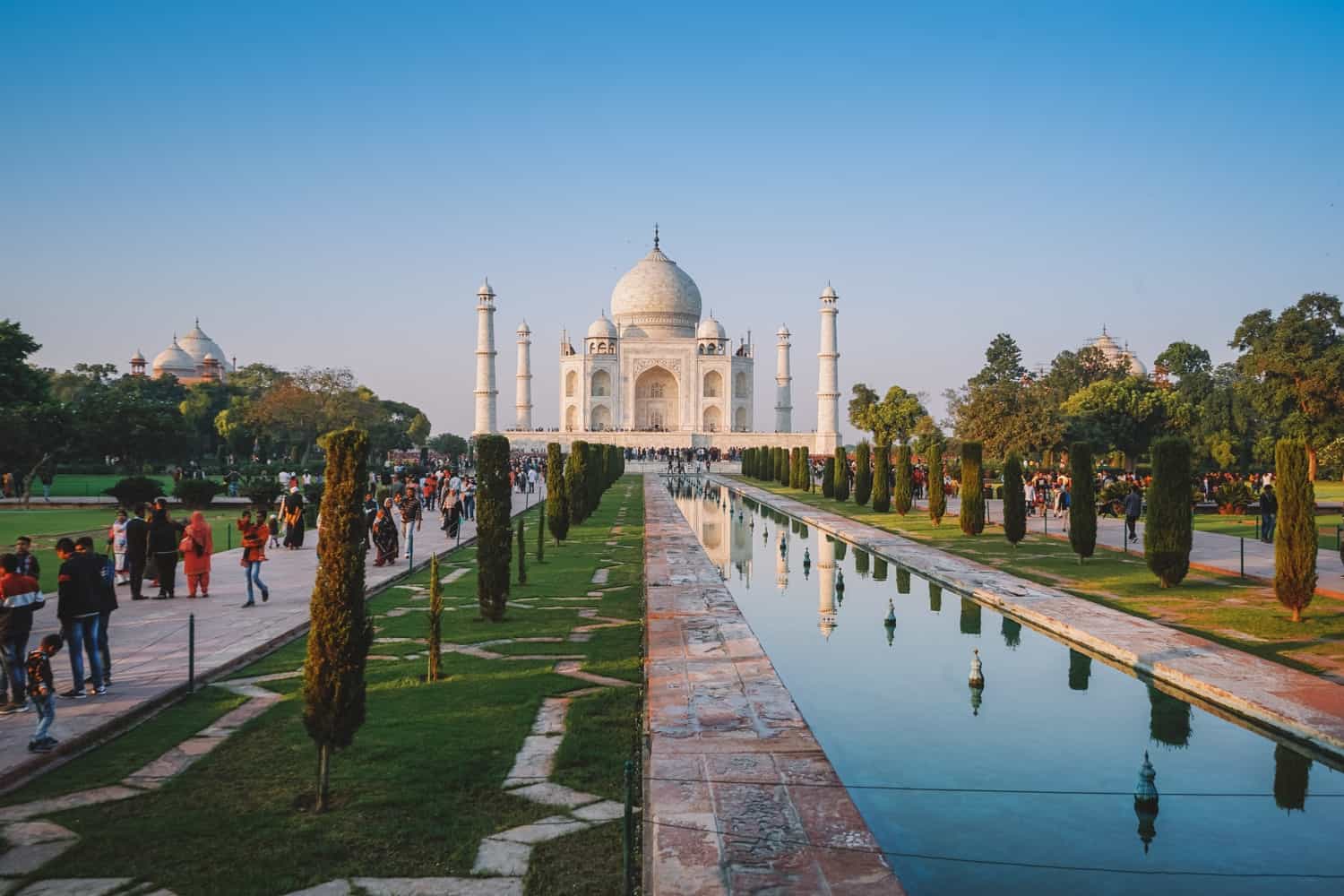
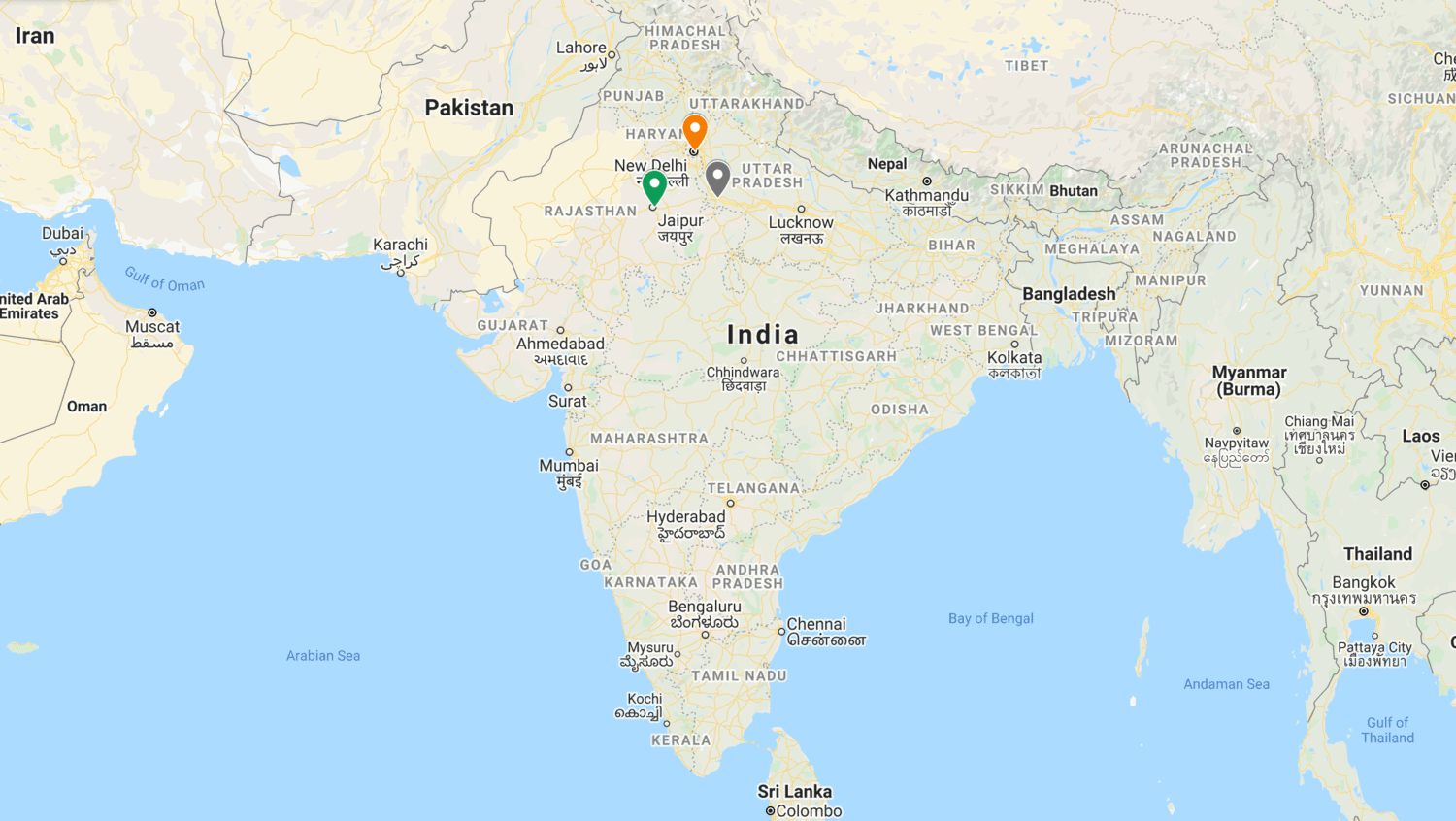
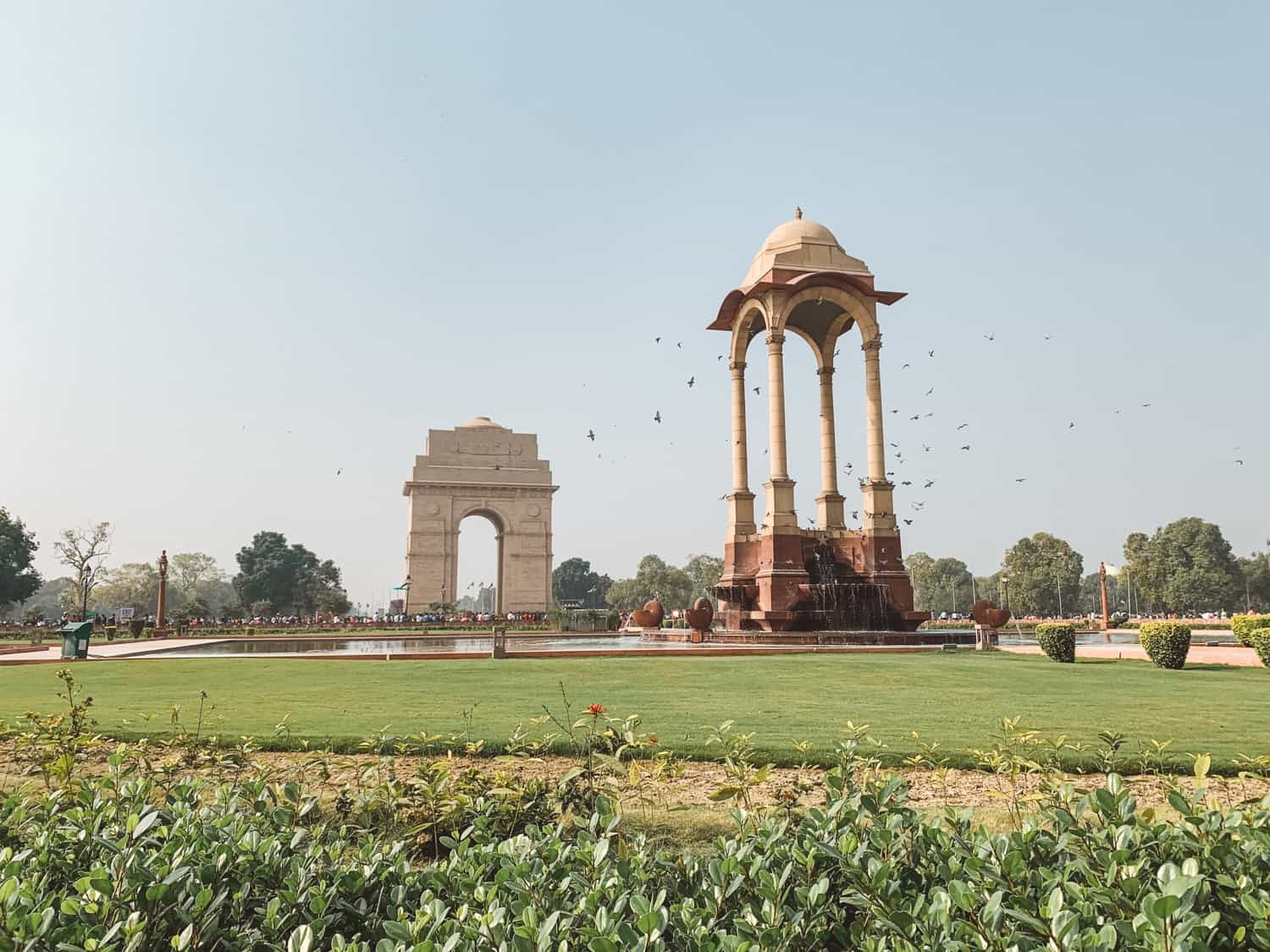
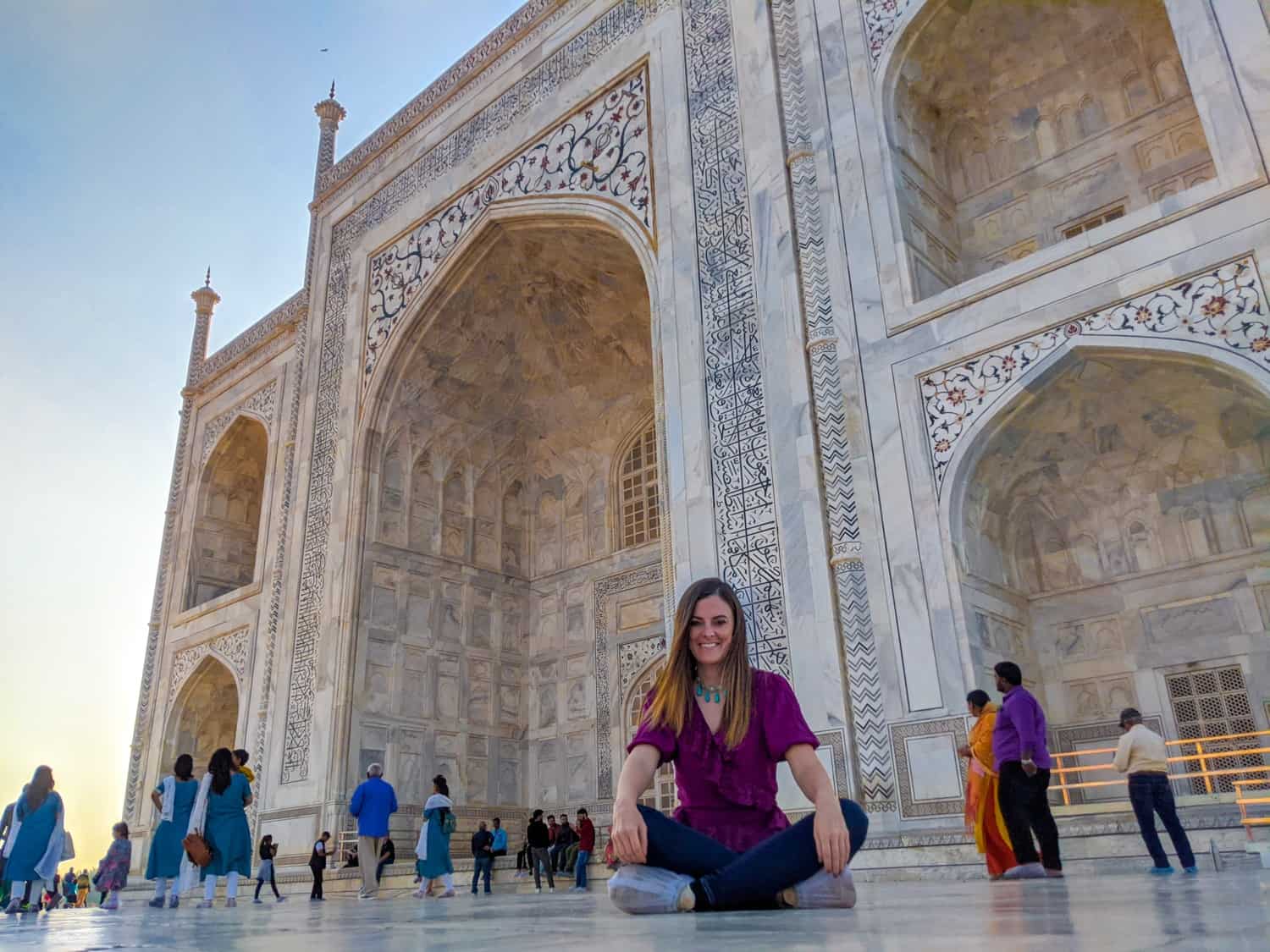

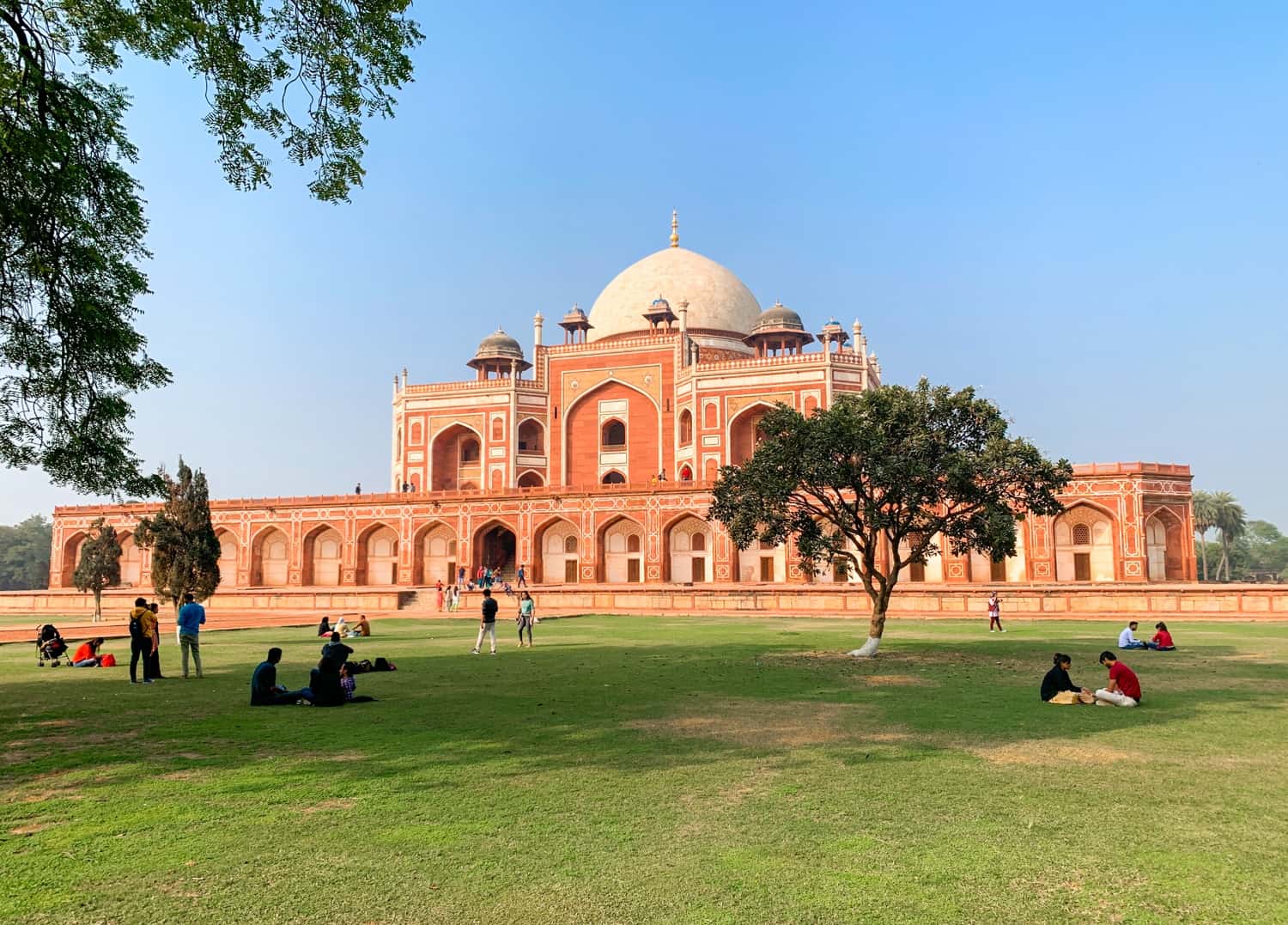
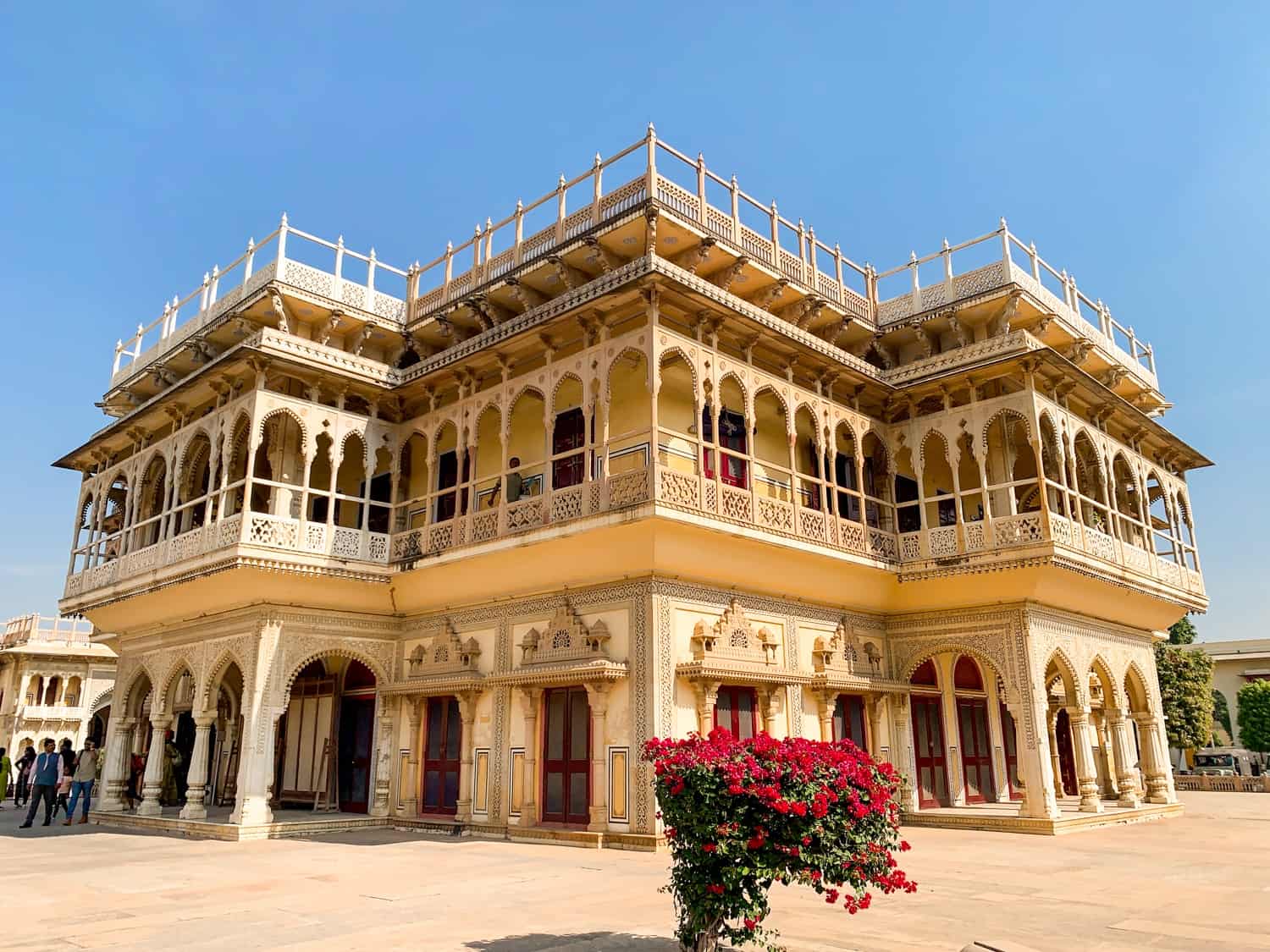
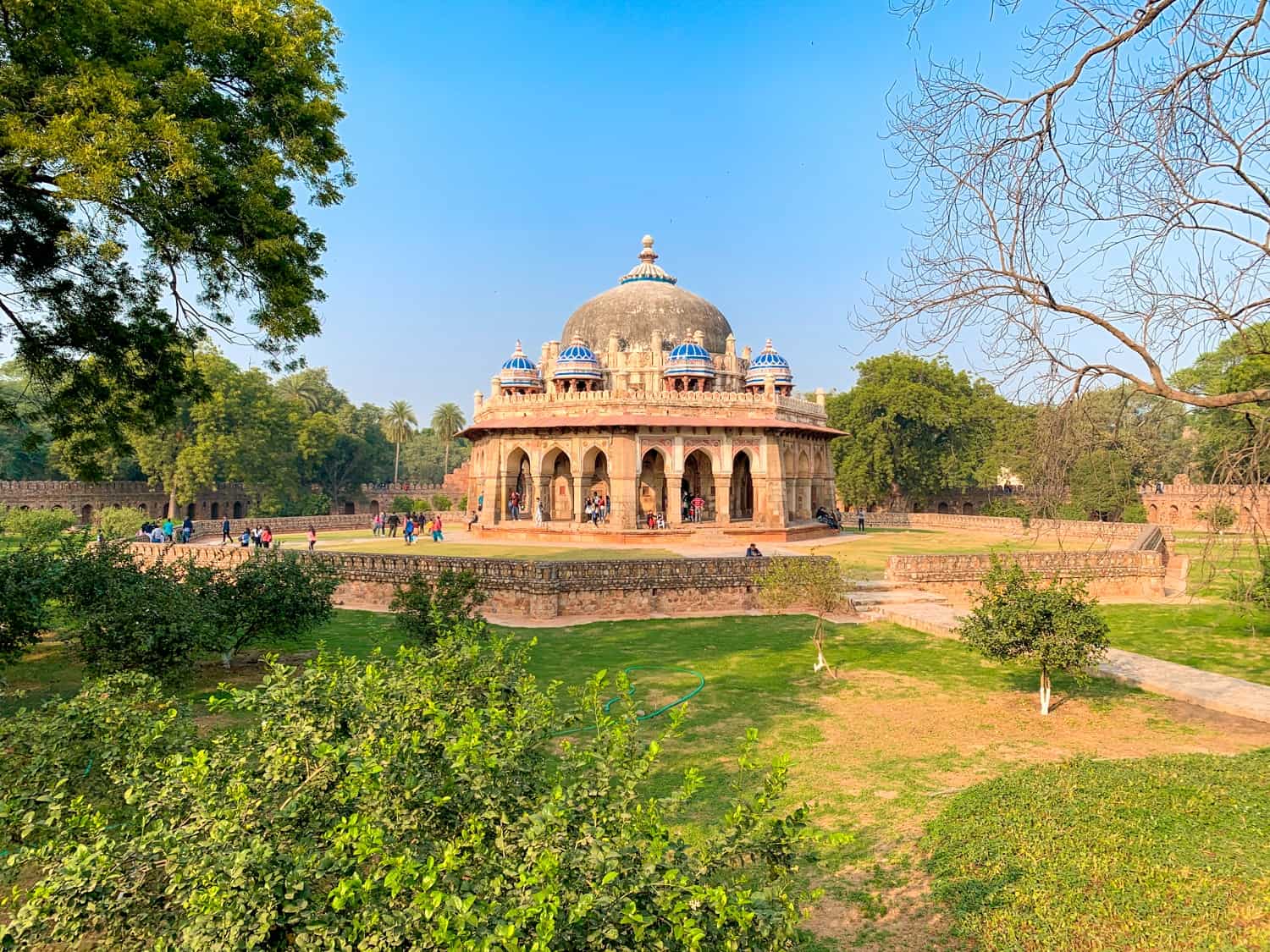
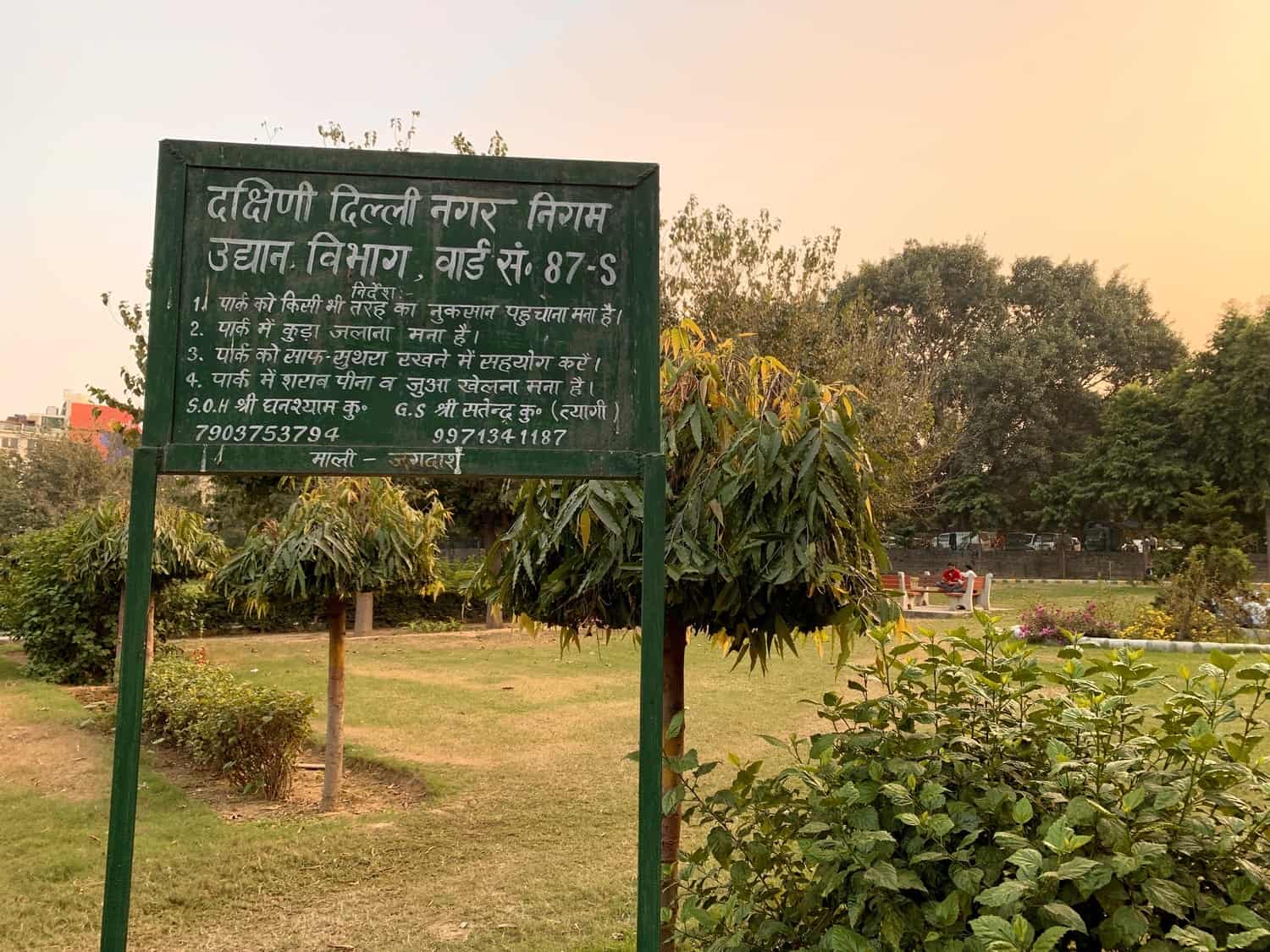
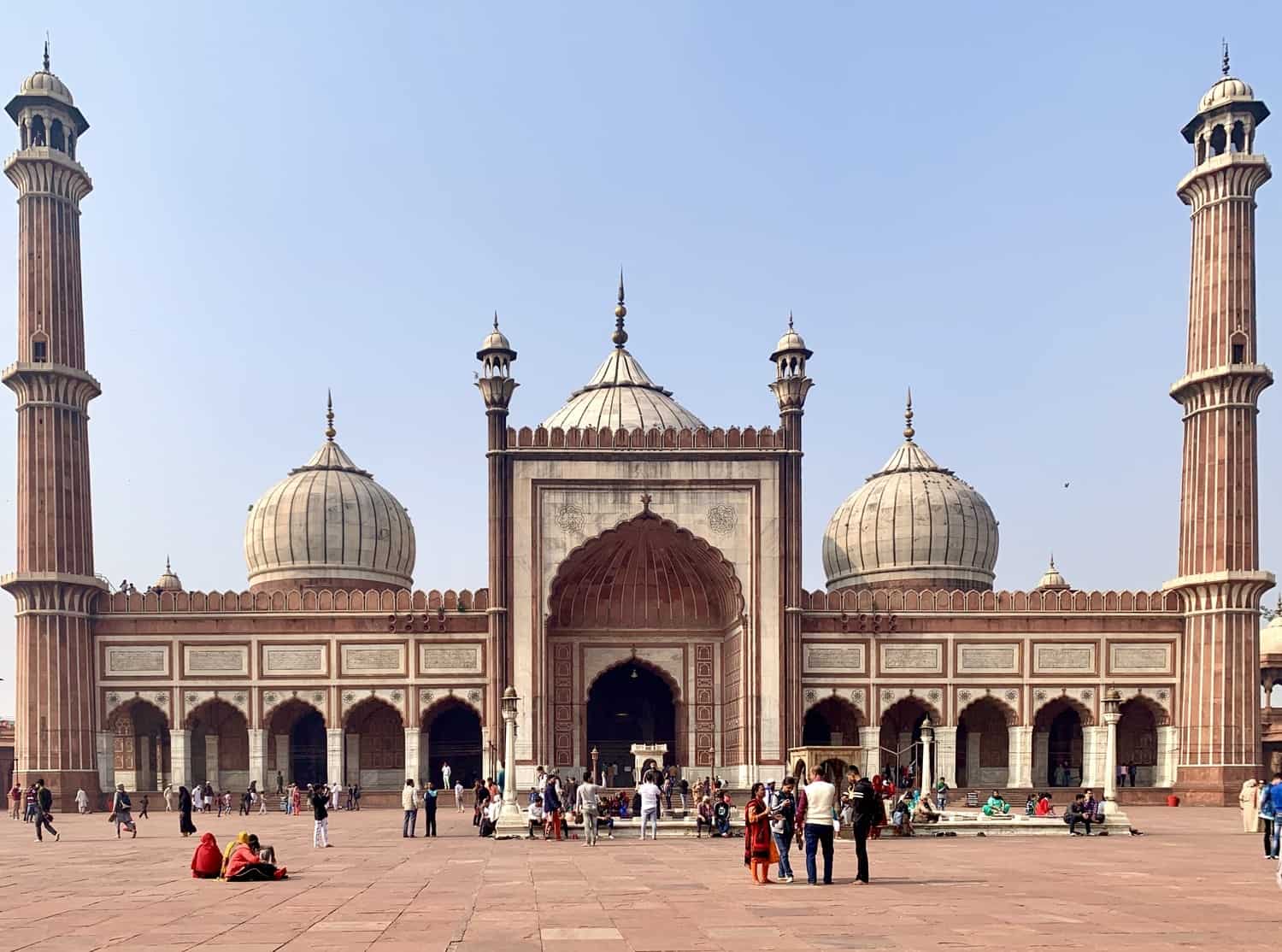
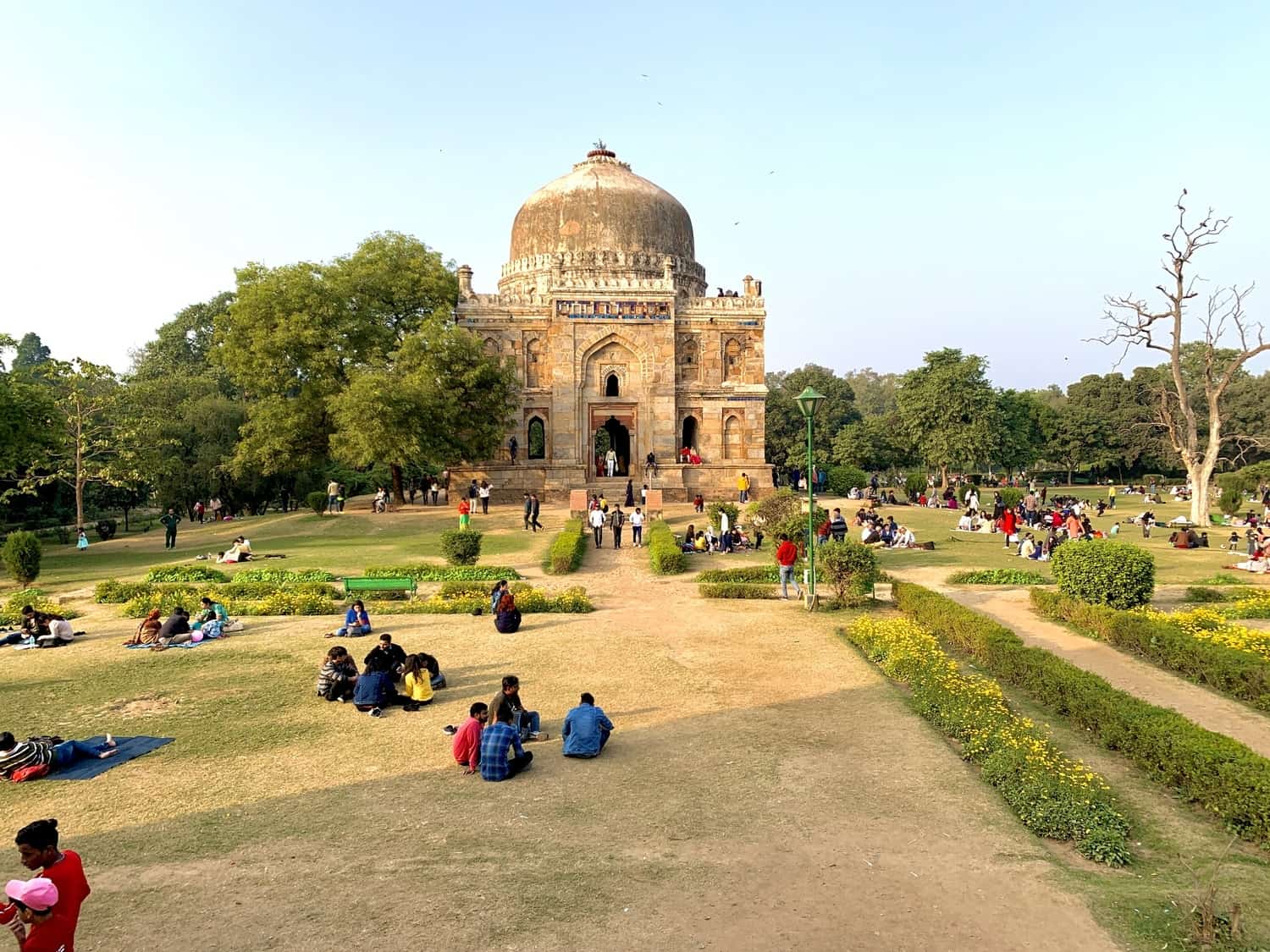

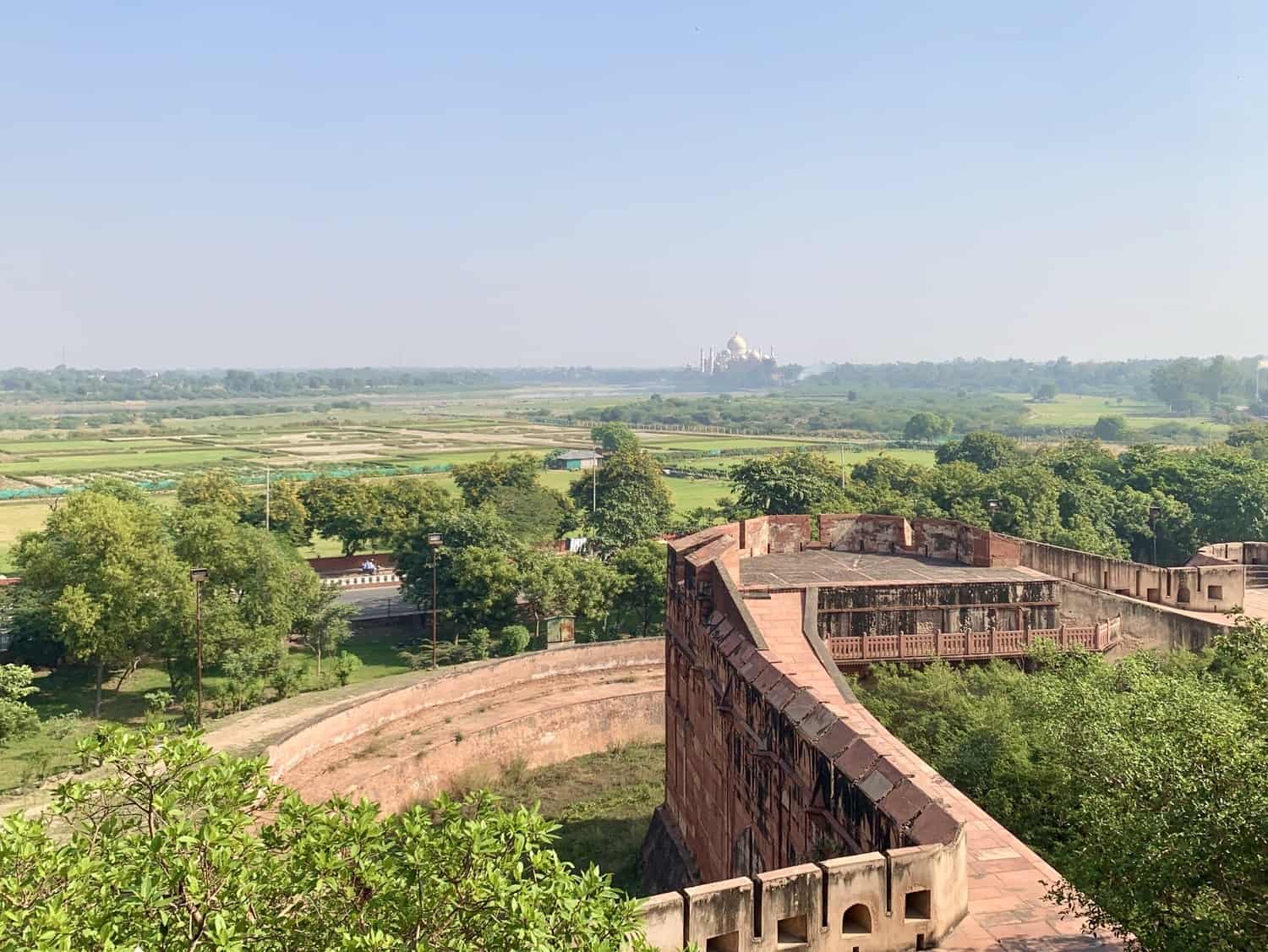
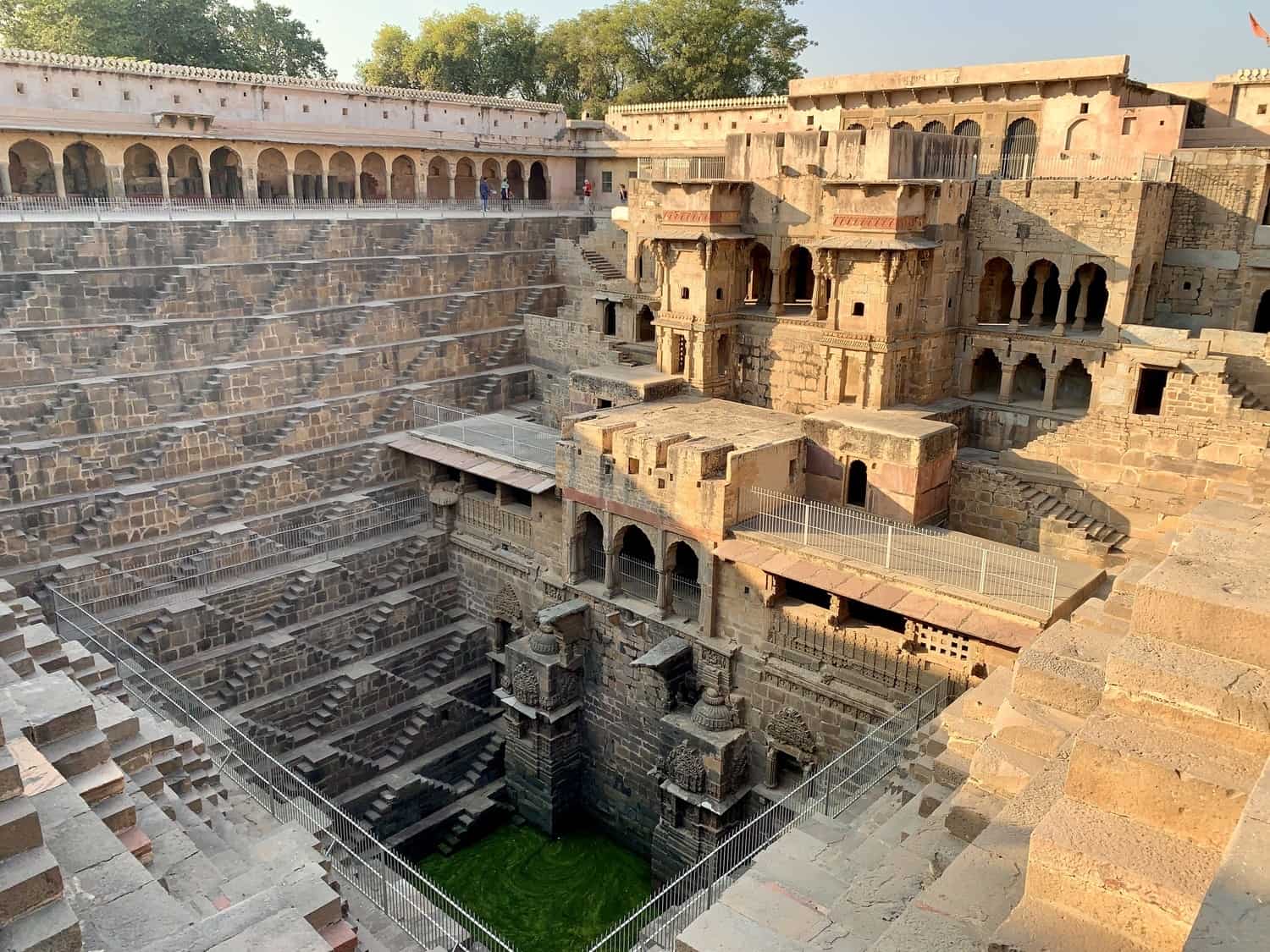
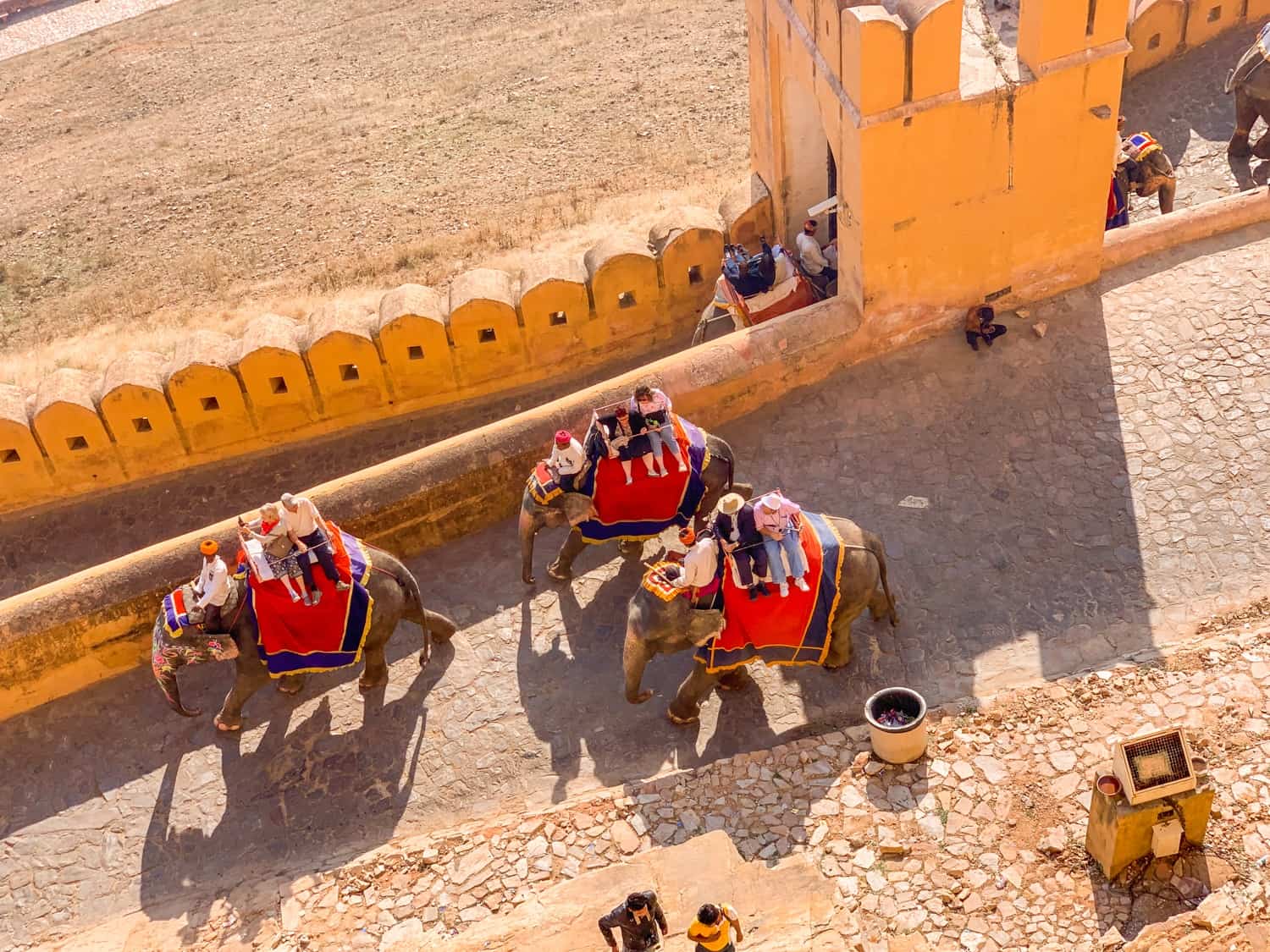
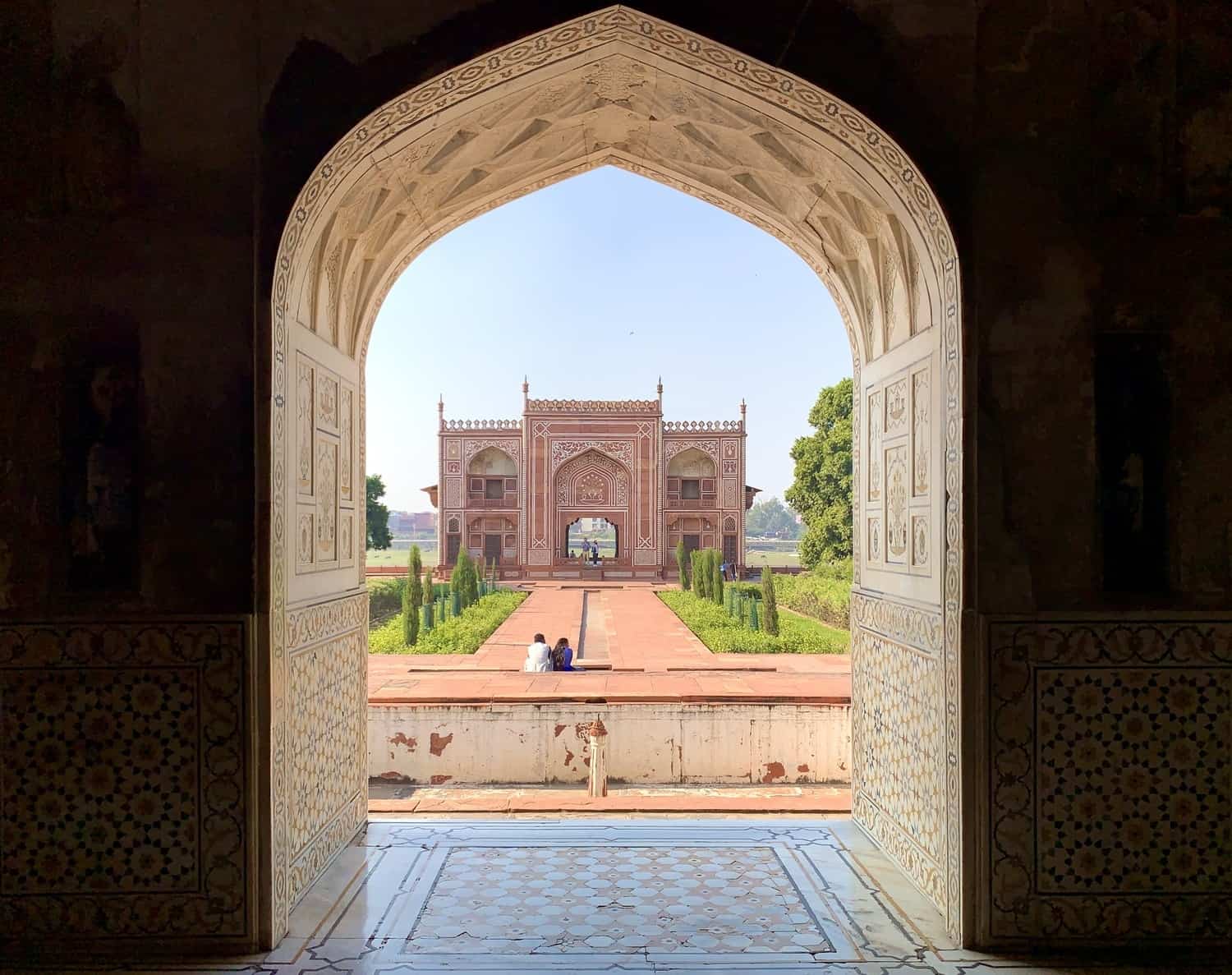
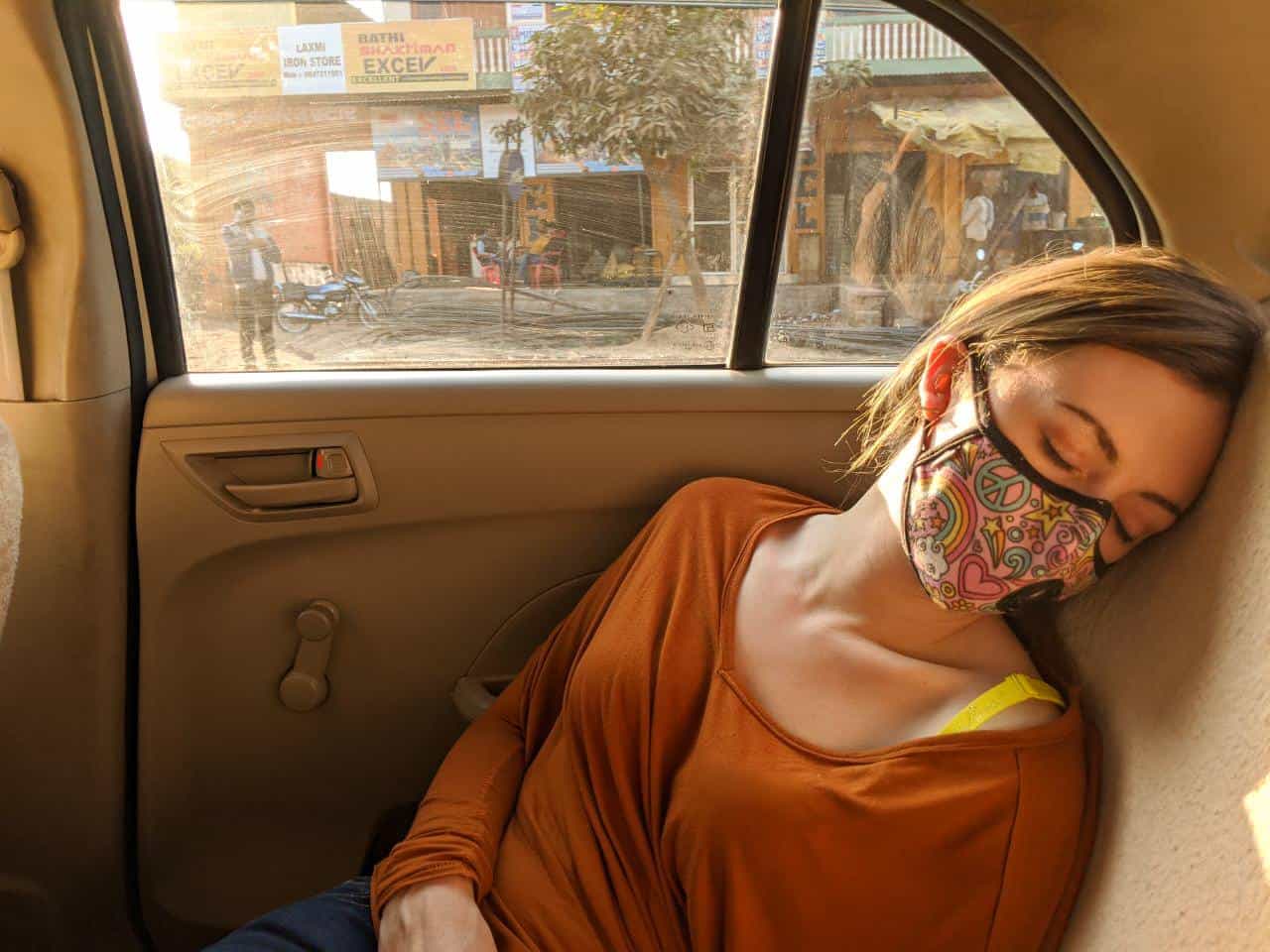
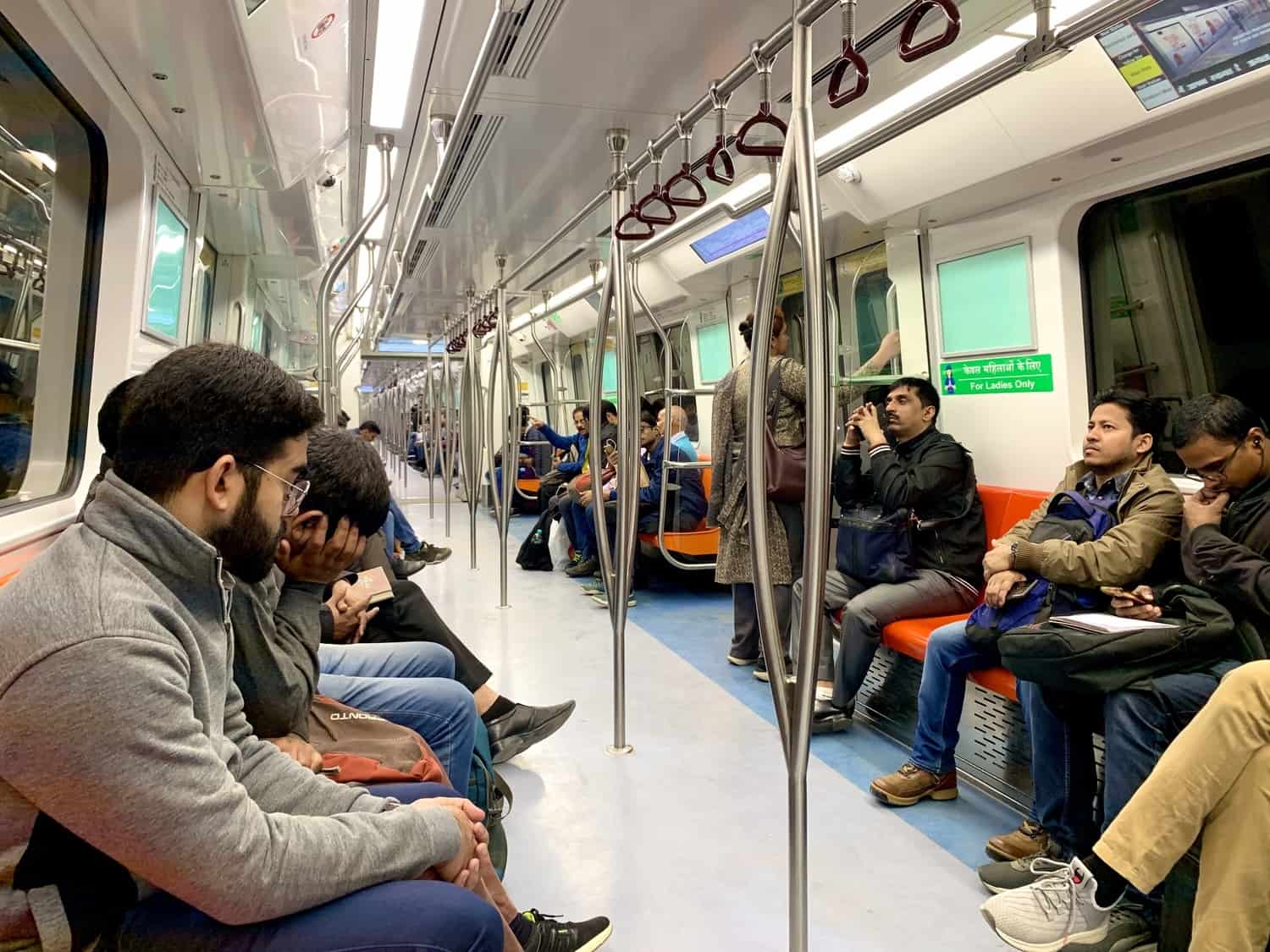
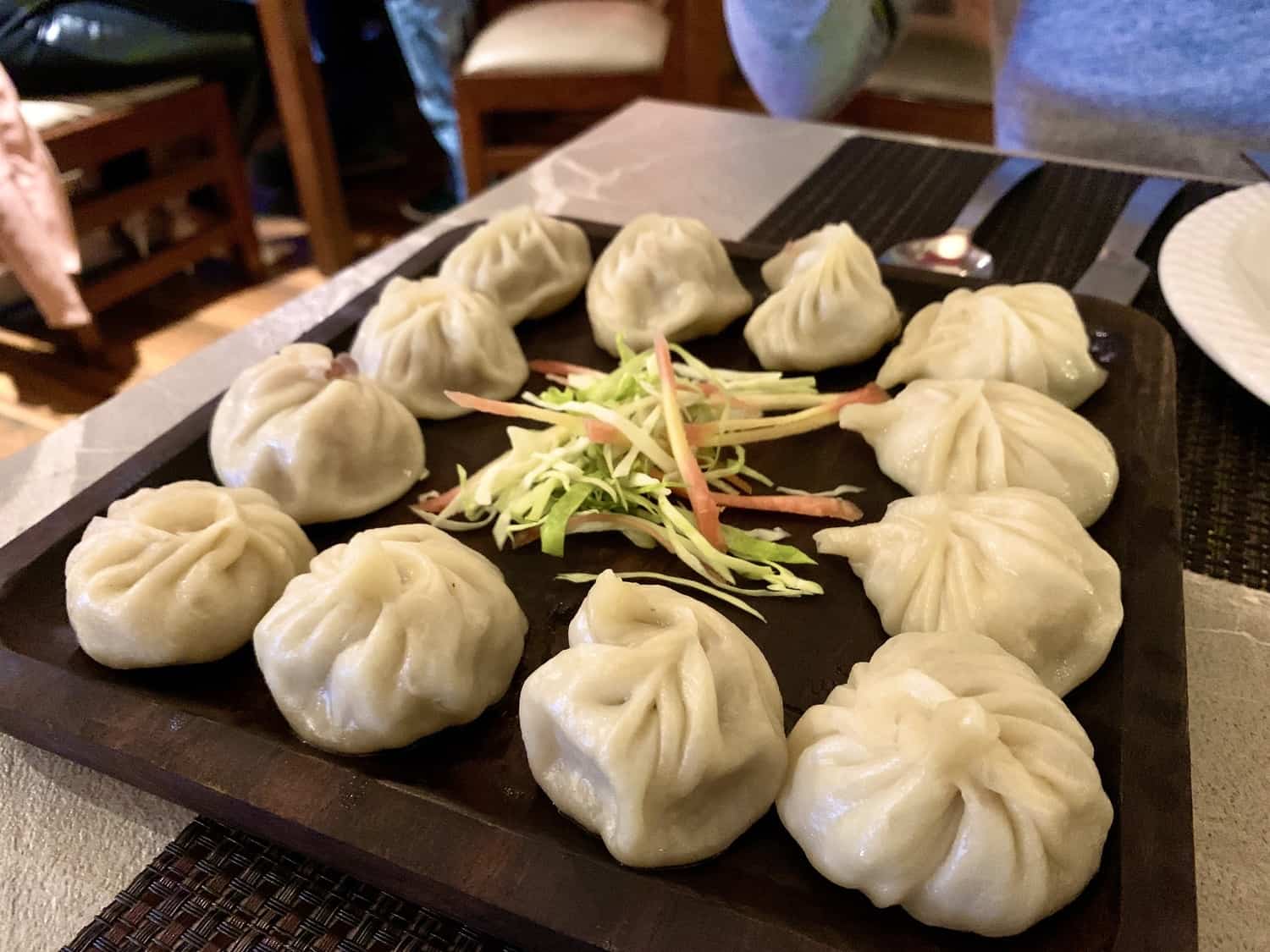
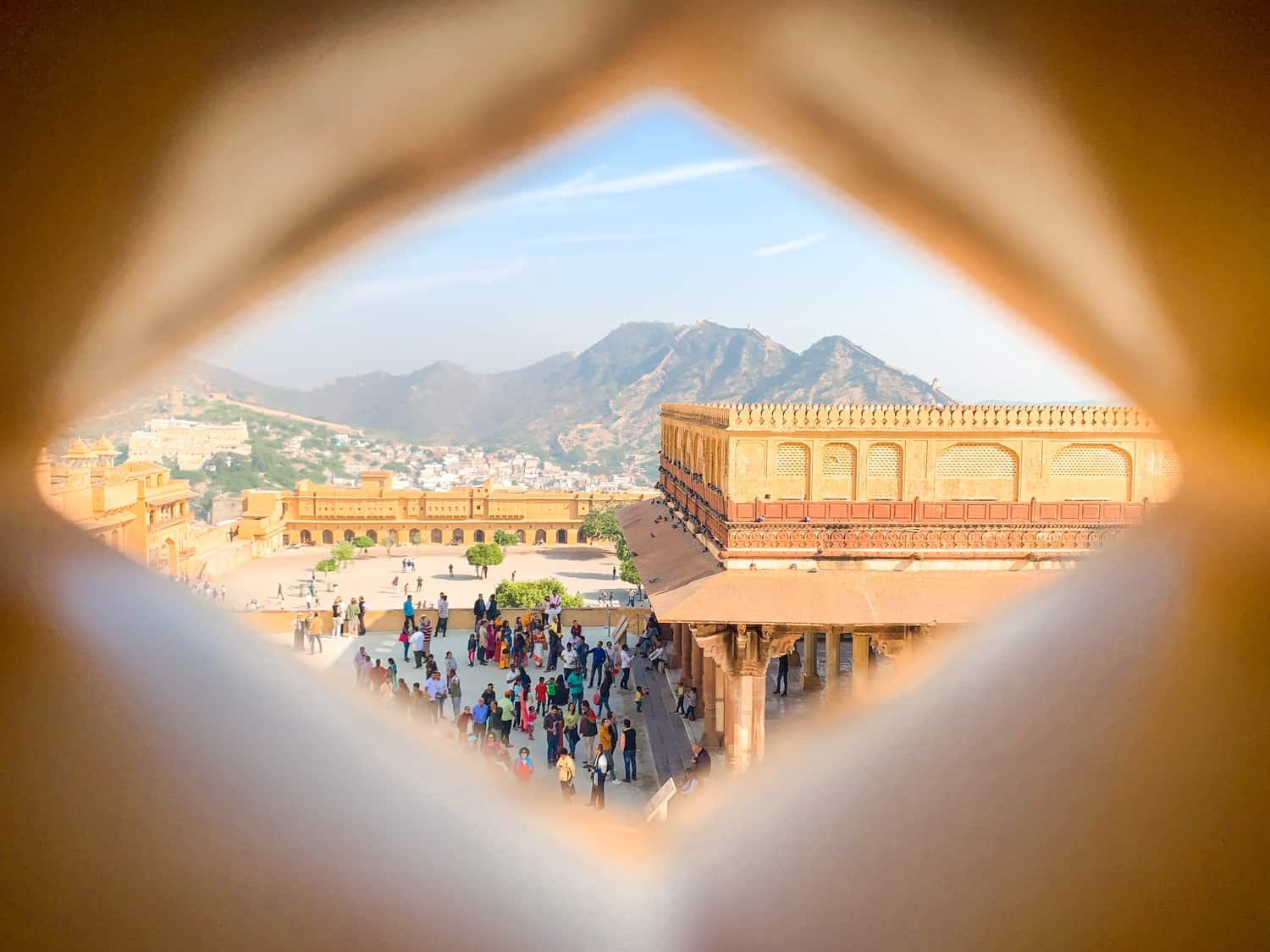
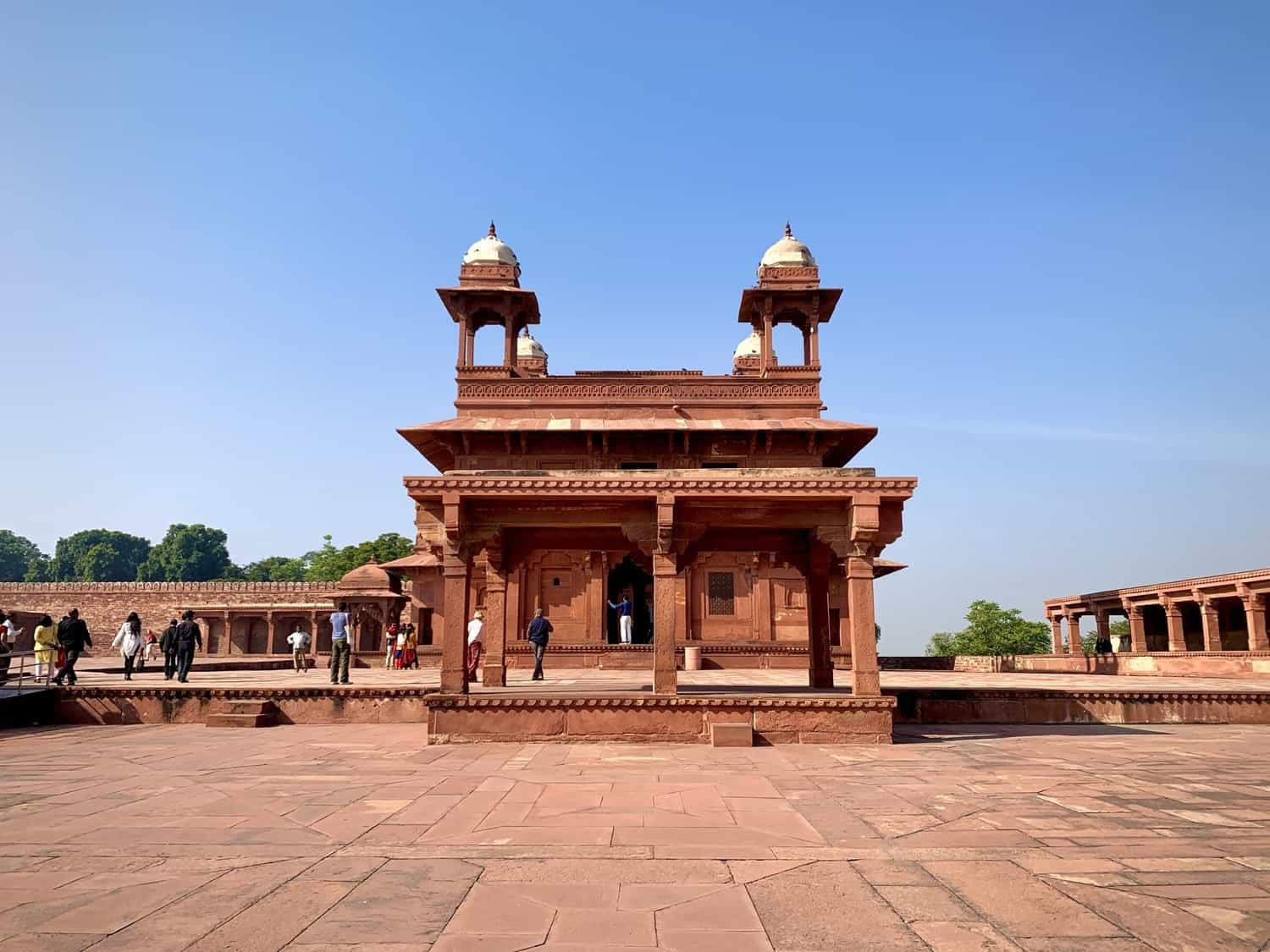






Hey Lauren! Loved reading this amazing golden triangle guide. I know you didn’t enjoy it too much but Jaipur is my favourite of the three Golden Triangle cities.
Wow. That was a really impressive article. India has a very rich cultural heritage and history. All 3 cities you mentioned have their own identity. Like, Delhi is the Indian Political Hub, Jaipur has heritage forts and archaeological sites and Agra has “The Taj Mahal”. Thanks for your article and I can’t wait to see what you write next.
Thanks so much!
Incredible piece Lauren! I’m going to be heading to India next month – well, maybe not if the coronavirus has anything to do with it! But even so, when I do finally get to the Golden Triangle, this is the guide I’m going to be using! Thanks so much for putting all of this together for us.
Thanks for reading! And I hope you make it there, whether it’s next month or next year :-)
You have lovely photos of India!! They show how symmetrical and amazing their architectural structures are. Hope I can visit India someday too!
What a treasure trove of information. On my way to India in the next couple weeks. I will use your intel as a guide. Many thanks!
Hi Lauren,
Thanks for the informative writeup. We were looking for information to help start planning our first short trip to India and found so many useful tips and advice from your article.